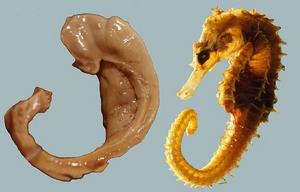>Mt.kiki (Created page with " link=http://yumenikki.wikia.com/wiki/Barracks_Settlement|frame|left|The Barracks Settlement ==[[List...") |
(cleanup) |
||
| (21 intermediate revisions by 8 users not shown) | |||
| Line 1: | Line 1: | ||
[[File:Barracks.jpg|frame|left|The Barracks Settlement]] | |||
[[File:Barracks.jpg | |||
==Pueblo== | |||
[[wikipedia:Pueblo|Pueblos]] are modern and old communities of [[wikipedia:Native Americans]] in the southwestern United States. The first Spanish explorers of the Southwest used this term to describe the communities housed in apartment-like structures built of stone, mud, and other local material. These structures were usually multi-storied buildings surrounding an open plaza. | |||
[[File:640px-Timothy_H__O'Sullivan_-_Section_of_South_Side_of_Zuni_Pueblo_-_GEH__197900140050.jpg|thumb|A pueblo.]] | |||
The communities were occupied by hundreds to thousands of [[wikipedia:Puebloan peoples|Pueblo people]]. The houses were only accessible through a ladder able to be lowered only from the inside, thus preventing break-ins and unwanted guests. | |||
==Pirori== | |||
[http://ja.wikipedia.org/wiki/%E5%8D%83%E3%81%A8%E5%8D%83%E5%B0%8B%E3%81%AE%E7%A5%9E%E9%9A%A0%E3%81%97#.E7.99.BB.E5.A0.B4.E4.BA.BA.E7.89.A9 <u>2 登場人物</u>] | |||
{{quote|An existence which gave the field to an object like a black shadow. | |||
It cannot speak about language only by pressing out tenuous voice, but there is also no expression. | |||
Although it does not have "itself" but has the power its exerted from a hand by anything, the ground free in it has transformed itself. | |||
黒い影のような物体にお面をつけたような存在。か細い声を搾り出すだけで言葉は話せず表情も無い。「己」を持たず、手からどんなものでも出す力を持つが、それはただの土くれが化けているものに過ぎない。}} | |||
“[The] ground free in it has transformed itself.” → The Pirori are coloured similarly to the ground and have [[wikipedia:Spirited away|no face]]. | |||
==Seahorse Resembling the Hippocampus== | |||
[[File:A_strange_orange_creature.png|thumb|The Seahorse.]] | |||
The [[wikipedia:Hippocampus#Name|name of the hippocampus]] comes from the Venetian anatomist [[wikipedia:Julius Caesar Aranzi|Julius Caesar Aranzi]] (1587), who likened it first to a silkworm and then to a ''seahorse'', which is called ''hippocampus'' in latin (from Greek ἵππος, "horse" and κάμπος, "coiled"). | |||
The German anatomist Duvernoy (1729), the first to illustrate the structure, also wavered between "seahorse" and "silkworm." | |||
[[File:Hippocampus_and_seahorse_cropped.jpg|thumb|The resemblance between the hippocampus and a seahorse.]] | |||
Another mythological reference appeared with the term ''pes hippocampi'', which may date back to [[wikipedia:Isbrand van Diemerbroeck|Isbrand van Diemerbroeck]] in 1672, introducing a comparison with the shape of the folded back forelimbs and webbed feet of the [[wikipedia:Hippocamp|Classical hippocampus]] (Greek: ἱππόκαμπος), a sea monster with a horse's forequarters and a fish's tail. | |||
==The Wilderness as a Desert== | |||
A desert can mean any barren place or situation. | |||
A desert can also mean to leave, abandon, or forsake. | |||
https://en.wiktionary.org/wiki/deserts#English | |||
[[Category:Yume Nikki theoretical discussions by Mt.kiki]] | |||
Latest revision as of 09:22, 20 November 2024
Pueblo
Pueblos are modern and old communities of wikipedia:Native Americans in the southwestern United States. The first Spanish explorers of the Southwest used this term to describe the communities housed in apartment-like structures built of stone, mud, and other local material. These structures were usually multi-storied buildings surrounding an open plaza.
The communities were occupied by hundreds to thousands of Pueblo people. The houses were only accessible through a ladder able to be lowered only from the inside, thus preventing break-ins and unwanted guests.
Pirori
“An existence which gave the field to an object like a black shadow.
It cannot speak about language only by pressing out tenuous voice, but there is also no expression.
Although it does not have "itself" but has the power its exerted from a hand by anything, the ground free in it has transformed itself.
黒い影のような物体にお面をつけたような存在。か細い声を搾り出すだけで言葉は話せず表情も無い。「己」を持たず、手からどんなものでも出す力を持つが、それはただの土くれが化けているものに過ぎない。”
“[The] ground free in it has transformed itself.” → The Pirori are coloured similarly to the ground and have no face.
Seahorse Resembling the Hippocampus
The name of the hippocampus comes from the Venetian anatomist Julius Caesar Aranzi (1587), who likened it first to a silkworm and then to a seahorse, which is called hippocampus in latin (from Greek ἵππος, "horse" and κάμπος, "coiled").
The German anatomist Duvernoy (1729), the first to illustrate the structure, also wavered between "seahorse" and "silkworm."
Another mythological reference appeared with the term pes hippocampi, which may date back to Isbrand van Diemerbroeck in 1672, introducing a comparison with the shape of the folded back forelimbs and webbed feet of the Classical hippocampus (Greek: ἱππόκαμπος), a sea monster with a horse's forequarters and a fish's tail.
The Wilderness as a Desert
A desert can mean any barren place or situation.
A desert can also mean to leave, abandon, or forsake.




